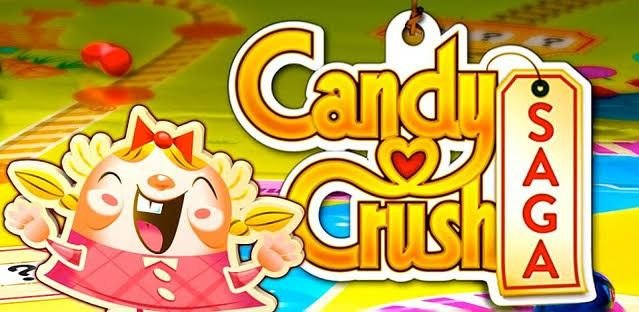Introduction to Candy Crush Saga

Candy Crush Saga is a wildly popular puzzle game that has captivated millions of players since its launch in April 2012. Developed by King, a prominent player in the mobile gaming industry, this vibrant match-three game quickly became a household name. The objective is simple yet addictive: players match colorful candies in combinations of three or more to clear them from the board and advance through the game’s many levels. This engaging gameplay, combined with challenging elements, has propelled Candy Crush Saga to the forefront of mobile gaming.
Upon its debut, Candy Crush Saga was initially released on Facebook, which facilitated its viral spread as users invited friends to join in the fun. Within a year, the game transitioned to mobile platforms, further enhancing its accessibility. Now available on iOS, Android, and Windows Phone, Candy Crush Saga has broadened its audience, making it one of the most downloaded mobile applications worldwide. Its reach has been so significant that in 2014, King went public with its shares listed on the New York Stock Exchange, a testament to the game’s commercial success.
Candy Crush Saga’s rise to popularity can be attributed not only to its colorful and engaging gameplay but also to its incorporation of social features. Players can connect with friends, compare progress on leaderboards, and send and receive lives to keep each other playing. This communal aspect has played a crucial role in maintaining player engagement. As part of the broader genre of puzzle games, Candy Crush Saga has set a high standard for design and user experience, inspiring numerous imitations and similar titles in the mobile gaming market.
Gameplay Mechanics and Features
Candy Crush Saga, a widely recognized puzzle game, offers captivating gameplay mechanics that have contributed to its immense popularity. At its core, the game revolves around matching three or more candies of the same color to clear them from the board. This simple yet engaging premise creates a variety of challenges across numerous levels. Players encounter different types of candies, each with unique properties, which add depth to the gameplay experience.
The main candy types include regular candies, striped candies, wrapped candies, and color bomb candies. Striped candies, for example, can clear an entire row or column when matched, while wrapped candies create a more extensive explosion that can clear surrounding candies. The color bomb can eliminate all candies of a particular color from the board, creating significant strategic advantages. These variations not only enhance the gameplay but also require players to develop effective matching strategies to succeed.
Furthermore, Candy Crush Saga introduces various power-ups and obstacles that make gameplay even more interesting. Power-ups can be obtained through in-game purchases or by achieving specific objectives, thus granting players the means to overcome challenging levels. Meanwhile, obstacles such as chocolate, jellies, and licorice can impede progress and require players to navigate carefully to clear levels successfully.
The level progression system is integral to the game, as it challenges players with increasing difficulty as they advance. Players can explore different game modes, including timed levels and ingredient collection, which add variety and replayability. Additionally, the social features of Candy Crush Saga allow players to connect with friends, share achievements, and compete on leaderboards, fostering a sense of community and engagement.
In summary, the combination of diverse candies, strategic power-ups, and interactive social features create a well-rounded gaming experience, making Candy Crush Saga an enduring favorite among puzzle enthusiasts.
Monetization and In-Game Purchases
Candy Crush Saga employs a monetization strategy primarily centered around in-game purchases that align with the widely adopted ‘freemium’ model. Players can download the game for free, but as they progress through increasingly challenging levels, they encounter opportunities to make purchases that can enhance their experience. These purchases often include items such as extra lives, boosters, and other resources that can help expedite progress through the game. This strategic approach not only caters to casual gamers who may prefer not to spend money but also appeals to those willing to invest financially for an augmented gaming experience.
The effectiveness of the freemium model in Candy Crush Saga is underscored by its significant revenue generation, with a vast player base contributing to a robust financial ecosystem. Players have the option to enjoy the game without spending money; however, the temptation to purchase in-game advantages can lead to a more expedited journey through the game. This aspect has garnered mixed reception among players. While some appreciate the option to enhance gameplay through purchases, others feel that relying on in-game purchases can create an uneven playing field, where those who spend money have distinct advantages over those who choose to stick to the free experience.
From an ethical standpoint, the monetization strategy of Candy Crush Saga raises questions about fairness and accessibility. Critics often highlight the risk of creating a pay-to-win environment, which can alienate players who opt not to spend money. This situation is particularly concerning given the game’s appeal to a younger demographic, who may not fully grasp the financial implications of their choices. Overall, the impact of in-game purchases on the Candy Crush Saga experience is complex, blending enjoyment with financial considerations that can vary significantly among players.
Final Thoughts and Overall Experience
Candy Crush Saga has established itself as a heavyweight in the realm of mobile gaming, attracting millions of players worldwide since its inception. One of its most notable strengths is its accessibility; the game can be enjoyed by individuals of all ages, making it a delightful choice for casual gamers. The vibrant graphics, combined with a broad array of challenging levels, create an engaging atmosphere that caters to both newcomers and seasoned players alike.
Replayability stands out as a significant factor in the game’s enduring popularity. With hundreds of levels and frequent updates introducing new challenges, players are continually drawn back to test their skills. The incorporation of special candies and boosters adds layers of strategy, allowing players to experiment with different approaches to level completion. This dynamic keeps the gaming experience fresh and exciting, enhancing enjoyment and prolonging engagement.
However, Candy Crush Saga is not without its drawbacks. Some players may encounter frustration due to the game’s monetization strategies, which involve purchasing extra lives or boosters. While it is feasible to progress without spending money, the temptation to buy in-game enhancements can detract from the experience, potentially making it less enjoyable for some users. This aspect has led to mixed feelings among the gaming community, sparking debates about in-app purchases in free-to-play games.
For those considering a foray into Candy Crush Saga, this title is well-suited for anyone seeking lighthearted entertainment. However, players who prefer games without financial constraints may want to explore alternatives, such as Bejeweled or Two Dots, which provide similarly enjoyable puzzle gameplay. Overall, Candy Crush Saga has carved its niche in the gaming landscape, delivering a blend of entertainment and challenge that continues to resonate with fans globally.






